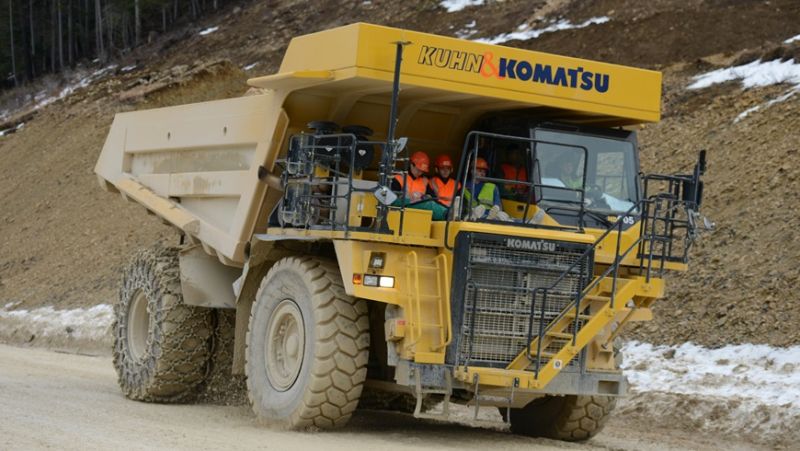What will be the world’s largest electric vehicle, currently being constructed by a consortium of Swiss companies, is best understood by the numbers. It weighs 50 tons, has an extra 71 tons of hauling capacity, takes nine stairs for the driver to reach the cab, and has 700 kWh of storage capacity, according to Arstechnica.
It’s called the e-Dumper, which, before I read about it, thought was actually the name of a futuristic toilet.
Ars has more details:
The e-Dumper has been in the works for a couple of years now, during which time its battery capacity has grown from the original 600kWh to what is now the equivalent of seven top-of-the-line Teslas. The cells in question are nickel-manganese-cobalt, 1,440 of them in total, weighing almost 10,000lbs (4.5 tonnes). And once the team has found space in the chassis for all of that energy storage, the idea is for the e-Dumper to spend the next decade trundling between a Swiss cement quarry and the Ciments Vigier works near Biel.
Here’s the really cool part: each round trip actually generates electricity. Because the e-Dumper goes up the mountain empty and descends carrying 71 tons (65 tonnes) of rock, it captures 40kWh on the way to the cement works via regenerative braking. But climbing back up to the quarry only requires 30kWh, so every trip will feed an extra 10kWh into the local electricity grid. Not bad when you then consider that the e-Dumper will be doing that trip 20 times a day.
The truck won’t run without some risk, since this amount of battery power has never been deployed before in a land vehicle.
Advertisement
“Some batteries start smoking, others burst into flames,” Marcel Held, a battery expert working on the project said, according to a press release. “The crucial thing in this instance is to make sure the neighboring cells are not damaged by the fire and heat, otherwise there is the risk of a chain reaction.”
The release did not say when the e-Dumper might be fully up-and-running, but it did say that it will cost “seven-figures.” Not cheap!














